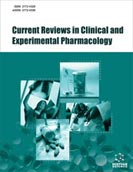Abstract
Aim: The aim of the present work was to evaluate the neuroprotective potential of berberine, levetiracetam and their combination in lead acetate-induced neurotoxicity by applying a drug repositioning approach.
Background: Alzheimer's disease (AD) is a neurodegenerative disease characterized by impairment of memory, disturbances in reasoning, planning, language and perception. Currently, there are only four drugs approved by US-FDA for AD; therefore, there is an extensive need for new drug development. The drug repositioning approach refers to the development of new uses for existing or abandoned pharmaceuticals. Several studies support the neuroprotective abilities of anti-oxidants resulting in neuronal protection against neurotoxins, suppression of oxidative stress and promotion of memory, learning and cognitive functions. Many natural polyphenols are being investigated as a potential therapeutic option for AD. Levetiracetam (LEV), a second-generation antiepileptic drug, is a new molecule that is clearly differentiated from conventional antiepileptic drugs by its pharmacologic properties. LEV also has been previously demonstrated to protect against oxidative stress-induced neurotoxicity in several models of seizures. Berberine (BBR) is an anti-inflammatory and anti-oxidant phytoconstituent.
Objective: To study the therapeutic effect of berberine, levetiracetam and their physical mixture in lead acetate-induced neurotoxicity in Swiss albino mice for probable application in the management of Alzheimer's disease.
Methods: Neurotoxicity was induced in Swiss albino mice by lead acetate. Behavioural parameters, such as transfer latency time and percentage alternation, were studied using Morris water maze (MWM), Elevated plus-maze test (EPM) and Y-maze for the assessment of improvement in learning and memory. Concentrations of acetylcholinesterase, MDA and GSH in the brain were also estimated. Brain samples were subjected to histopathological studies.
Results: Results revealed that the combination of BBR and LEV exhibited a significant neuroprotective effect by decreasing escape latency time and increasing time spent in the target quadrant in MWM. The combination also decreases transfer latency time in EPM and acetylcholinesterase levels in the brain as compared to standard donepezil. Reduced neuronal damage was also confirmed by the histopathological report.
Conclusion: Leveteracitam, berberin and their combination resulted in the significant conservation of various behavioural, biochemical, enzymatic and anti-oxidant parameters that were evaluated. The neuroprotective effect of plain leveteracitam and berberin was significantly better than their combination. The anticipated synergism or additive effect was not observed with the combination of leveteracitam and berberin in lead acetate–induced neurotoxicity.
Keywords: Oxidative stress, anti-inflammatory, drug repositioning, anti-oxidant, neurodegenerative disease, phytophenols.
[http://dx.doi.org/10.1017/S1041610205002450] [PMID: 16403246]
[PMID: 3553166]
[http://dx.doi.org/10.1155/2014/309129] [PMID: 25025046]
[http://dx.doi.org/10.1007/s00128-011-0475-9] [PMID: 22105937]
[http://dx.doi.org/10.1289/ehp.6616] [PMID: 15471729]
[http://dx.doi.org/10.1016/S0014-4886(03)00272-3] [PMID: 14637118]
[http://dx.doi.org/10.1016/S0304-3940(97)00633-2] [PMID: 9350842]
[http://dx.doi.org/10.1177/0748233708098127] [PMID: 19106128]
[http://dx.doi.org/10.1515/REVEH.2009.24.1.15] [PMID: 19476290]
[http://dx.doi.org/10.1016/j.neuro.2016.07.013] [PMID: 27492863]
[http://dx.doi.org/10.1016/j.ddstr.2011.10.002] [PMID: 22368688]
[http://dx.doi.org/10.1111/j.1528-1167.2006.00454.x] [PMID: 16529608]
[PMID: 21395360]
[http://dx.doi.org/10.1038/sj.bjp.0704766] [PMID: 12086975]
[http://dx.doi.org/10.1007/s10571-006-9132-y] [PMID: 17205390]
[http://dx.doi.org/10.1053/seiz.2000.0504] [PMID: 11466024]
[http://dx.doi.org/10.1002/ptr.2399] [PMID: 18618524]
[http://dx.doi.org/10.1002/ptr.2968] [PMID: 19998323]
[http://dx.doi.org/10.3109/10520295.2016.1164897] [PMID: 27045382]
[http://dx.doi.org/10.5620/eaht.e2020001]
[http://dx.doi.org/10.1016/j.bcp.2005.12.028] [PMID: 16448624]
[http://dx.doi.org/10.1124/jpet.109.154724] [PMID: 19587312]
[http://dx.doi.org/10.1007/s00213-001-0979-9] [PMID: 11889492]
[http://dx.doi.org/10.1016/S0955-2863(02)00205-X] [PMID: 12165357]
[http://dx.doi.org/10.1016/S0014-2999(98)00911-X] [PMID: 10064145]
[http://dx.doi.org/10.1016/j.nbd.2006.02.008] [PMID: 16624564]
[http://dx.doi.org/10.1016/S0091-3057(01)00782-1] [PMID: 11900814]
[http://dx.doi.org/10.1016/j.pbb.2007.03.010] [PMID: 17477963]
[http://dx.doi.org/10.1016/0006-2952(61)90145-9] [PMID: 13726518]
[http://dx.doi.org/10.1016/0003-2697(78)90342-1] [PMID: 655387]
[http://dx.doi.org/10.1159/000136485] [PMID: 4831804]
[http://dx.doi.org/10.1017/S1461145705005833] [PMID: 16083515]
[http://dx.doi.org/10.1016/j.phrs.2003.11.017] [PMID: 15304240]
[http://dx.doi.org/10.1007/s12011-012-9370-4] [PMID: 22395955]
[http://dx.doi.org/10.1002/jat.1423] [PMID: 19263481]
[http://dx.doi.org/10.1016/1043-6618(90)90742-V] [PMID: 2330338]
[http://dx.doi.org/10.1177/0748233714545624] [PMID: 25147304]































